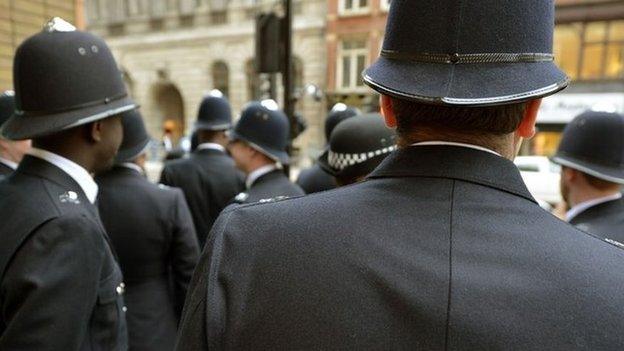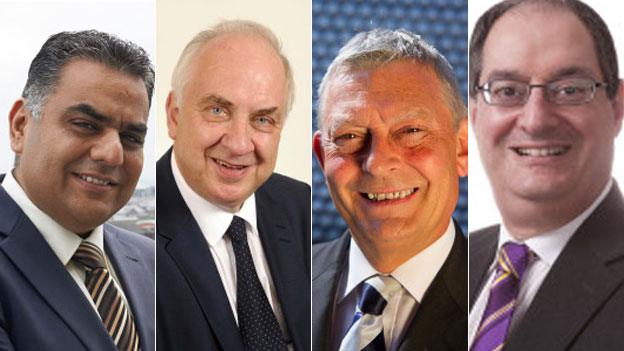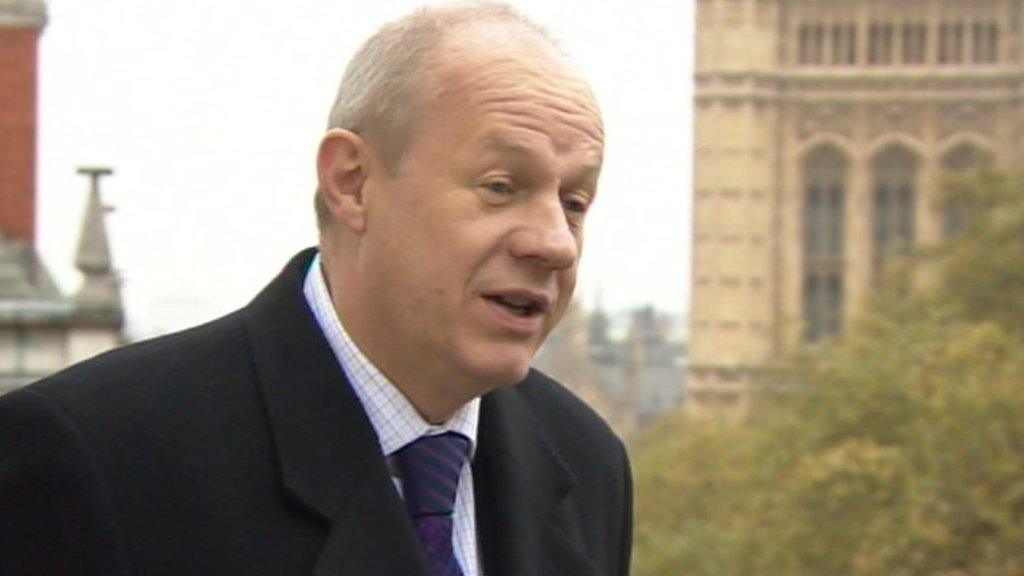The least popular election ever?
- Published

The turnout for Thursday's by-election to replace the West Midlands police and crime commissioner was just 10.3%. Where does this stand in the history of low participation by voters?
The people of the West Midlands have spoken - well, at least some of them.
Only 10.3% of those eligible to do so cast their vote, external in the election for a new police and crime commissioner, who will set budgets and can hire and fire chief constables.
The lowest figure was 9.54% in Coventry. The highest was 11.58% in Solihull.
Maybe it was the mid-August scheduling that prevented a greater turnout on Thursday. Or maybe people just couldn't be bothered.
Either way, the public's attitude to PCCs, described by the government as the "most significant democratic reform of policing in our lifetime" when created in 2012, could be termed lukewarm at best.
When the original PCC contests took place in 2012, the overall turnout across England and Wales (except London, where the mayor does the job instead of a PCC), was just 15% - the lowest in an election since World War Two. In the West Midlands it was 12%.
At the time, the government was criticised for not mailing people to alert them to the fact the elections were taking place. This time the Home Office spent £700,000 on leafleting every household in the West Midlands about the by-election, which followed the death of Labour's Bob Jones in July.

Labour's Tony Lloyd (right) stood down as an MP to become Greater Manchester's commissioner
"This level of turnout is a disaster which should put the future of PCCs into doubt," says Alexandra Runswick, director of Unlock Democracy, external, which campaigns for constitutional reform. "Few voters knew that the election was happening and even fewer cared. The government has fixed some of the mistakes made during the first PCC elections, but the fundamental problems with PCCs remain."
It is fair to say the government sees PCC awareness as more of a "slow burner", with interest growing over time as they become better known in their communities.
So, returning to the figures, where does the latest turnout figure stand in the recent league table of apathy at large-scale elections? At the top, it would seem.
Apart from the 2012 PCC elections, the closest competitor since World War Two appears to be the 18% turnout at the Manchester Central parliamentary by-election, which took place on the same day. This was prompted when Labour's Tony Lloyd stood down as an MP - to become a PCC, in fact.
Just 18.5% turned out at Mansfield's Mayoral Election in 2002 and 19% at the 1999 Leeds Central by-election, won by Labour's Hilary Benn.
European elections are notoriously unappealing to voters. In 1999, UK turnout slumped to 24%, but this has increased to more than 30% recently, although it is still low compared with most other EU countries.
General elections are undoubtedly the biggest draw for voters and the media, but turnout tends to be lower if the outcome is perceived to be predictable.
The 2001 election, in which Labour easily retained power following its 1997 landslide, saw the figure drop below 70% for the first time since 1918, reaching a mere 59.4%.
Since then, participation has picked up, but has still remained below 70%.
With pundits predicting a close contest next year, it appears likely that people will be more inclined to vote. But it is still unlikely we will even approach the 86.8% turnout of 1910.
The next PCC elections take place in 2016. Those involved can only dream of such figures.
- Published21 August 2014

- Published16 November 2012
